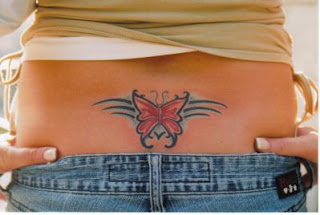Tuesday, June 22, 2010
Celtic Design Tattoos
The Celts were an ancient race dominating Europe during the Iron Age, after migrating across the continent from south to north, and finally settling in Ireland, Britain, Brittany and Galicia, sharing common languages, traditions and customs denominated Celtic. Over time, the term would help to describe the particular art of Celtic Design Tattoos.
This art is characterized by knot work and spirals inspired by ancient patterns, although it also referred to the original work that many tattooing artists can copy in detail to obtain accurate Celtic Design Tattoos with a quality look. The most common of the Celtic symbols is the cross, unique for its shape, but there are many other motifs for you to choose.
All genuine Celtic art incorporate always combine work, with spirals, geometric forms, knots and key work, so there is no such thing like as simplistic Celtic Design Tattoos. Original Artists create the knot work overlapping one or more lines over and under their original designs in the belief that every crossed line has the power to protect the person.
Other tattooists simply will copy existing Celtic Design Tattoos, adding whatever modification or addition you may desire. One of the most common sources of inspiration is the Internet, where anyone can find countless numbers of Celtic designs. However, the purists, artists who practice correctness, usually consult illuminated manuscripts of the Early Medieval Period.
Popular Celtic Design Tattoos of today are the result of the Book of Kells, a famous manuscript depicting some of the most beautiful and intricate Celtic patterns. Other manuscripts used as reference are the Durham Gospels, the Lindisfarne Gospels, and the Book of Durrow, which images inspire not only replicas but original and modern Celtic art.
Like in other cultures and civilizations, there are Celtic Design Tattoos with no color in particular, because such designs are taken from symbols carved in stones, wood, leather or sculptures and pottery, not always colorized, and more often associated to Celtic Tribal art, widely accepted as well.
In the United States Celtic Design Tattoos is a relatively new tendency; however, Celtic art is popular since the Revolutionary War of 1775. Although intricate designs are the main characteristic of Celtic designs, there are many other styles trying to emulate this art, including Gothic, Romanesque, and Renaissance art.
Celtic Design Tattoos whether original or reproduction of originals are meant to be a unique body decoration that, like any other tattoo, should be chosen carefully. Keep in mind that whatever you place on your body will be with you for the rest of your life, unless you take the risk of applying another tattoo over, or paying costly operations to get rid of your tattoos.
This art is characterized by knot work and spirals inspired by ancient patterns, although it also referred to the original work that many tattooing artists can copy in detail to obtain accurate Celtic Design Tattoos with a quality look. The most common of the Celtic symbols is the cross, unique for its shape, but there are many other motifs for you to choose.
All genuine Celtic art incorporate always combine work, with spirals, geometric forms, knots and key work, so there is no such thing like as simplistic Celtic Design Tattoos. Original Artists create the knot work overlapping one or more lines over and under their original designs in the belief that every crossed line has the power to protect the person.
Other tattooists simply will copy existing Celtic Design Tattoos, adding whatever modification or addition you may desire. One of the most common sources of inspiration is the Internet, where anyone can find countless numbers of Celtic designs. However, the purists, artists who practice correctness, usually consult illuminated manuscripts of the Early Medieval Period.
Popular Celtic Design Tattoos of today are the result of the Book of Kells, a famous manuscript depicting some of the most beautiful and intricate Celtic patterns. Other manuscripts used as reference are the Durham Gospels, the Lindisfarne Gospels, and the Book of Durrow, which images inspire not only replicas but original and modern Celtic art.
Like in other cultures and civilizations, there are Celtic Design Tattoos with no color in particular, because such designs are taken from symbols carved in stones, wood, leather or sculptures and pottery, not always colorized, and more often associated to Celtic Tribal art, widely accepted as well.
In the United States Celtic Design Tattoos is a relatively new tendency; however, Celtic art is popular since the Revolutionary War of 1775. Although intricate designs are the main characteristic of Celtic designs, there are many other styles trying to emulate this art, including Gothic, Romanesque, and Renaissance art.
Celtic Design Tattoos whether original or reproduction of originals are meant to be a unique body decoration that, like any other tattoo, should be chosen carefully. Keep in mind that whatever you place on your body will be with you for the rest of your life, unless you take the risk of applying another tattoo over, or paying costly operations to get rid of your tattoos.
Subscribe to:
Comments (Atom)



















